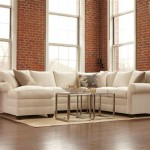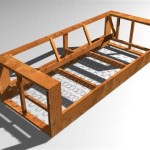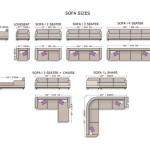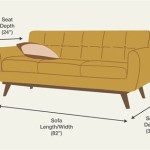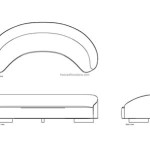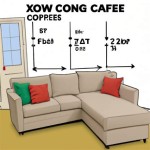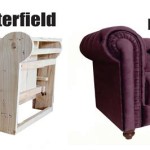Sofa Cushion Design Images Integrating Wood Accents: A Comprehensive Overview
The integration of wooden elements in sofa cushion design represents a fusion of comfort and structural aesthetics. This approach utilizes wood not just as a supportive frame but as an integral design component that enhances the visual and tactile appeal of sofa cushions. Images showcasing this integration reveal a wide array of styles, ranging from rustic to modern, each offering a unique perspective on how wood can complement fabric and filling materials.
The selection of appropriate wood types, fabric textures, and cushion fillings is crucial for achieving a cohesive and aesthetically pleasing final product. Factors such as wood grain, color, and finish play a significant role in determining the overall character of the sofa and the cushions. Similarly, the choice of fabric, whether it be linen, cotton, or synthetic blends, influences the perceived comfort and durability of the cushions. The following sections delve into the various aspects of sofa cushion design incorporating wooden elements, focusing on design considerations, material selection, and practical considerations.
Design Considerations: Balancing Aesthetics and Functionality
When incorporating wood into sofa cushion design, a primary consideration is the balance between aesthetics and functionality. The wooden elements should not only enhance the visual appeal of the cushions but also contribute to their structural integrity and comfort. The size, shape, and placement of the wood accents must be carefully planned to avoid compromising the cushion's softness and support.
One common design approach involves using wooden frames or panels around the edges of the cushions. This provides a defined structure and can create a visually striking contrast between the wood and the fabric. The shape of the wood can be simple and geometric, or more ornate and decorative, depending on the desired style. In some designs, the wood is used to create a recessed area within the cushion, which can be used to accommodate smaller decorative items or simply to add visual depth.
Another design element is the type of joinery used to connect the wooden pieces. Exposed joinery, such as dovetail joints or mortise-and-tenon joints, can add a touch of craftsmanship and authenticity to the design. Alternatively, concealed joinery can create a cleaner, more minimalist look. The choice of joinery depends on the desired aesthetic and the level of detail that is desired in the final product.
The color and finish of the wood are also important design considerations. Natural wood finishes, such as oil or wax, can highlight the grain and texture of the wood, creating a warm and inviting feel. Stained wood finishes allow for a wider range of color options, enabling the wood to be matched to the surrounding decor. Painted wood finishes can provide a more modern and contemporary look.
Finally, the overall style of the sofa and the cushions should be considered. Wooden elements can be incorporated into a variety of styles, from rustic and traditional to modern and contemporary. The key is to choose wood types, finishes, and designs that complement the overall aesthetic of the furniture.
Material Selection: Wood Types, Fabrics, and Fillings
The choice of materials is paramount in the successful execution of sofa cushion design with wooden accents. Selecting the right wood type involves considering factors such as durability, grain pattern, and color. Hardwoods, such as oak, maple, and walnut, are generally preferred for their strength and resistance to wear and tear. Softwoods, such as pine and cedar, can also be used, particularly in more rustic designs, but they may require more maintenance over time.
The fabric chosen for the cushion covering significantly impacts both the aesthetic and functional aspects of the design. Natural fibers, such as linen and cotton, offer breathability and a soft texture, but they may be less durable than synthetic options. Synthetic fabrics, such as polyester and microfiber, are often more resistant to stains and fading, making them suitable for high-traffic areas. Blended fabrics, which combine natural and synthetic fibers, can offer a balance of comfort, durability, and ease of care. The color and pattern of the fabric should also complement the color and grain of the wood.
The filling material inside the cushion determines its comfort level and support. Common filling options include down, feathers, foam, and fiberfill. Down and feathers offer a luxurious feel and excellent conformability, but they require regular fluffing to maintain their shape. Foam fillings provide firm support and are resistant to compression, making them a good choice for cushions that will be used frequently. Fiberfill fillings are a synthetic alternative that offers a balance of comfort and affordability. The density and thickness of the filling should be tailored to the desired level of support and the size of the cushion.
When selecting materials, it is important to consider the environmental impact. Choosing sustainably sourced wood and eco-friendly fabrics can minimize the environmental footprint of the design. Look for wood that is certified by organizations such as the Forest Stewardship Council (FSC) and fabrics that are made from recycled materials or grown using organic methods.
The combination of these materials creates a symphony of textures and tones. The ruggedness of the wood contrasts with the softness of the fabric, while the chosen filling provides comfort and support. A cohesive material palette contributes to the overall aesthetic appeal and ensures the longevity of the sofa cushions.
Practical Considerations: Construction, Maintenance, and Longevity
Beyond the aesthetic and material selection aspects, practical considerations play a crucial role in the long-term success of sofa cushion designs incorporating wood elements. Proper construction techniques are essential for ensuring the durability and stability of the cushions. The wood components should be securely fastened to the fabric and filling, using techniques such as gluing, stapling, or sewing. Reinforcements, such as corner blocks or metal brackets, may be necessary to strengthen the joints and prevent them from loosening over time.
Maintenance is another key consideration. The wood elements should be treated with a protective finish to prevent moisture damage and scratches. Regular cleaning with a soft cloth and appropriate cleaning products can help to maintain the appearance of the wood. The fabric coverings should be cleaned according to the manufacturer's instructions, which may involve spot cleaning, vacuuming, or professional cleaning. Removable cushion covers are particularly beneficial, as they allow for easier cleaning and replacement.
The longevity of the sofa cushions depends on the quality of the materials and the care that is taken in their maintenance. High-quality wood, durable fabrics, and resilient fillings will contribute to the long-term performance of the cushions. Regular maintenance, such as fluffing the cushions and cleaning the wood and fabric, will help to extend their lifespan. Avoid exposing the cushions to direct sunlight or extreme temperatures, as this can cause fading and damage. Rotating the cushions periodically can help to distribute wear and tear evenly.
The weight of the wooden elements should also be considered, particularly for cushions that will be moved frequently. Lightweight woods are preferable, as they will make the cushions easier to handle and transport. The design should also minimize the risk of injury from sharp edges or protruding corners. All edges should be rounded or smoothed to prevent accidental cuts or scrapes.
By carefully considering these practical aspects, it is possible to create sofa cushions that are not only aesthetically pleasing but also durable, comfortable, and easy to maintain. The integration of wooden elements requires a thoughtful approach to design and construction, but the resulting product can be a unique and long-lasting addition to any living space.
The exploration of sofa cushion design with wood accents is constantly evolving, with new materials, techniques, and styles emerging regularly. Staying abreast of these developments can help designers and manufacturers create innovative and appealing products that meet the changing needs and preferences of consumers.

Solid Wood Sofa Cushion Cover

Buy Wooden Sofas Upto 70 Off With Classic Style Royaloak

Teak Wood Sofa Set Teaklab

Taskwood Furniture Solid Wooden With Cushions For Living Room Cream Fabric 3 Seater Sofa In Buy

1000 Ideas About Wooden Sofa On Couch

Wooden Sofa With Cushion 5 Seaters Teak Wood

Traditional Wooden Sofa Set Kuber Furniture

R T S Furniture Brown Solid Wooden Sofa 3 Seater With Rubber Cushion Living Room 7 Inch At 15500 Piece In Chennai

Wooden Sofa Set Design Ideas Modern Wood Modular

Wooden Sofa Set Design N Style Casa Furnishing

